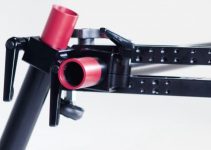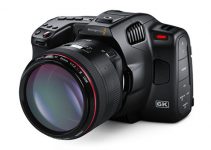When you try to film in low light with a Micro 4/3 camera such as the Panasonic GH5, more often than not, you’ll come across the horrifying visual monstrosity in the form of noise/grain, lack of detail, or image distortion in your entire footage. Overall, things could get a bit tricky if you don’t have at least a couple of decent lights in your backpack, or even worse, you could get into real trouble if you don’t carry along any at all.
So, how do you fight against this fear-driven foe and partake in the adventures of shooting in the depths of darkness? Videographer Joonas Tahtien explains by breaking down the topic into three key areas: gear selection, basic camera settings, and creative setting adjustments.
When it comes to opting for the right gear to shoot in low-light, there are a couple of basic guidelines you should follow. Obviously, you should pick a camera that is synonymous with low-light shooting. If you don’t have one, the next thing to consider is the lens you’re shooting with.
The rule of thumb is to try and pick a lens that has a low f-stop (such as f/1.8 or even lower if possible). Tahtien also recommends shooting with a prime lens and utilizing a Speedboster to increase the amount of light hitting the sensor, thus getting more efficient results.
If that’s not enough, you can still play around with your camera settings. For instance, make sure to open up your lens aperture as wide as possible and lower your ISO and shutter as low as possible. To start off, use the suggested settings in the screenshot below as a reference and build from there.
Furthermore, you could still get creative only by using the available light. A rule Thatien likes to follow on those occasions is taking highlights as a priority while composing his shots. To ensure that his highlights don’t peak, he simply exposes the camera to those areas. Keep in mind that as you do so, shadows will be crushed to almost a black look, so make sure this technique will aid in getting the shot you’re looking for.
Another reasonable recommendation is to turn reflections to your advantage. After all, when it comes to shooting in low-light, the more light you get, the better your image will turn out, right? Additionally, even when you’re trying to film a dark subject, it’s nice to have some sort of light emanating from a particular direction, even if it is faint just to add some contrast, making the shot seem aesthetically more pleasing to the eye.
Whatever the case, shooting in darkness has and always will be a challenge for filmmakers. To power through the struggle, it’s important to take the time to understand the equipment you’re using so that you can work around the limitations it provides and hopefully produce some stunning images regardless of the challenges you may need to tackle along the way.
[source: Joo.Works]
Order Links:
Panasonic Lumix DC-GH5 Mirrorless Micro Four Thirds Digital Camera (B&H, Amazon US)
Disclaimer: As an Amazon Associate partner and participant in B&H and Adorama Affiliate programmes, we earn a small comission from each purchase made through the affiliate links listed above at no additional cost to you.
Claim your copy of DAVINCI RESOLVE - SIMPLIFIED COURSE. Get Instant Access!





